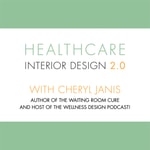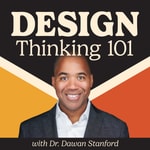Healthcare Interior Design 2.0 – Détails, épisodes et analyse
Détails du podcast
Informations techniques et générales issues du flux RSS du podcast.

Healthcare Interior Design 2.0
Porcelanosa
Fréquence : 1 épisode/25j. Total Éps: 98

Classements récents
Dernières positions dans les classements Apple Podcasts et Spotify.
Apple Podcasts
🇨🇦 Canada - design
09/07/2025#87🇺🇸 États-Unis - design
09/07/2025#96🇨🇦 Canada - design
08/07/2025#78🇨🇦 Canada - design
07/07/2025#65🇨🇦 Canada - design
06/07/2025#56🇨🇦 Canada - design
05/07/2025#52🇨🇦 Canada - design
04/07/2025#37🇺🇸 États-Unis - design
09/05/2025#75🇺🇸 États-Unis - design
03/04/2025#92🇺🇸 États-Unis - design
02/04/2025#51
Spotify
Aucun classement récent disponible
Liens partagés entre épisodes et podcasts
Liens présents dans les descriptions d'épisodes et autres podcasts les utilisant également.
See all- https://www.nursingihd.com/
137 partages
- https://aahid.org/
126 partages
- http://healthdesign.org
108 partages
Qualité et score du flux RSS
Évaluation technique de la qualité et de la structure du flux RSS.
See allScore global : 53%
Historique des publications
Répartition mensuelle des publications d'épisodes au fil des années.
Episode 64, Donna Deckard, BSN, MPA, EDAC, Barbara Dellinger, MA, FIIDA, CHID, EDAC, and Teri Lura Bennett, BSN, RN, CHID, EDAC
mardi 1 octobre 2024 • Durée 01:06:06
"I decided I should go back to school for interior design because someone should be designing these spaces who knew what it was like to work in them. And I decided it would be me." —Teri Lura-Bennett
Step into the world of evidence-based healthcare design with host Cheryl Janis and an all-star lineup of experts: Donna Deckard, Director of the EDAC program at the Center for Health Design; Barbara Dellinger, a veteran healthcare interior designer with over 40 years of experience and Teri Lura-Bennett, a unique blend of registered nurse and acclaimed healthcare interior designer.
Our guests dive deep into the often-overlooked yet critical world of hospital flooring and surfaces, sharing eye-opening stories of trials, failures, and triumphs. Learn how a single flooring decision can impact patient safety, staff efficiency, and maintenance costs for years to come.
Discover the power of evidence-based design as our experts reveal how meticulous research and real-world testing are revolutionizing healthcare environments. From navigating the complexities of material selection to accessing reliable, up-to-date information, this episode equips you with the knowledge to make informed decisions that go beyond aesthetics.
Whether you're a seasoned healthcare designer or new to the field, you'll gain invaluable insights to elevate your next project and create spaces that are not just beautiful, but safer and more effective.
Learn more about The Swiss Cheese Model that Teri mentions here: https://thedecisionlab.com/reference-guide/management/swiss-cheese-model
Learn more about the EBD process of Finding and Conducting Research that Donna shares by viewing and downloading this .PDF:
https://drive.google.com/file/d/1QhBFnumvnfe16CwkOhkpWqM6KYikZ5MU/view?usp=sharing
Learn more about The Center for Health Design and the EDAC Certification by visiting: https://www.healthdesign.org/.
LinkedIn Contact Info for Guests:
Barbara Delinger: https://www.linkedin.com/in/barbara-dellinger-9697b613/
Teri Lura Bennett: https://www.linkedin.com/in/teri-bennett-61306925/
Donna Deckard: https://www.linkedin.com/in/donna-deckard-6b38318/
In today’s episode, Cheryl and her guests discuss the following:
-
Barbara shares a riveting story about helping to save the healing gardens in a billion-dollar military hospital project. Picture a tense value engineering meeting where millions were at stake, and an architect's impassioned defense of evidence-based design saved the day! Thank you Barbara!
-
Journey through time with Donna as she traces the roots of evidence-based design back to the 1970s. Learn how a groundbreaking study on hospital window views revolutionized the field and sparked a design revolution.
-
Teri reveals her unique path from ICU nurse to interior designer. Her story of redesigning a coronary care unit while still a nurse manager will inspire anyone looking to make a career pivot.
-
Uncover the mysteries of the "Swiss Cheese Model" as Teri explains how a series of small oversights can lead to major design failures - and how to prevent them.
-
Get the inside scoop on a real-world flooring study at Johns Hopkins, where 12 different materials battled it out in a high-traffic corridor. The results might surprise you!
-
Barbara and Teri dish on the drama of failing fabrics in healthcare settings. Their tale of the "Durable Coated Fabrics Task Group" reads like a design detective story, complete with millions of dollars at stake and a race against time to find a solution.
-
Laugh (and cringe) at Teri’s anecdotes about well-meaning cleaning staff inadvertently causing more problems - and learn valuable lessons about the importance of whole-team education in healthcare design.
-
Discover the unexpected link between evidence-based medicine and design as Donna explains how three pioneering doctors in the 70's laid the groundwork for today's healthcare environments.
-
Get fired up about the power of research as the guests share how they've used evidence to defend design choices, influence product development, and create safer, more effective healing spaces.
-
Walk away with a treasure trove of resources, including the Center for Health Design's knowledge repository (with over 6,000 articles!) and tips for earning your EDAC certification.
Shout Outs:
- Center for Health Design
- American Academy of Healthcare Interior Designers
- Facility Guidelines Institute (FGI)
Industry Partners:
The world is changing quickly. The Center for Health Design is committed to providing the healthcare design and senior living design industries with the latest research, best practices and innovations. The Center can help you solve today’s biggest healthcare challenges and make a difference in care, safety, medical outcomes, and the bottom line. Find out more at healthdesign.org.
Additional support for this podcast comes from our industry partners:
-
The American Academy of Healthcare Interior Designers
-
The Nursing Institute for Healthcare Design
Learn more about how to become a Certified Healthcare Interior Designer® by visiting the American Academy of Healthcare Interior Designers at: https://aahid.org/.
Connect to a community interested in supporting clinician involvement in design and construction of the built environment by visiting The Nursing Institute for Healthcare Design at https://www.nursingihd.com/
FEATURED PRODUCTThe prevention of nosocomial infections is of paramount importance. Did you know that bathrooms and showers – particularly in shared spaces – are a veritable breeding ground for pathogen, some of which we see in the form of mold and the build-up of toxic bio films on surfaces.
Body fats and soap scums provide a rich food sauce for micro-organisms such as airborne bacteria Serratia Marcescens, which thrive in humid conditions.
We know that people with weakened immune systems are so much more vulnerable to the illnesses associated with infection and let’s face it, none of us go into the shower with an expectation that we might get sick.
So how do we keep those shower walls clean? Well let’s think big – BIG TILES.
Porcelanosa have developed XXL Hygienic Ceramic Tiles that are 5 feet long - which means just one piece fits the wall of a shower or tub surround. XTONE Porcelain slabs are 10 feet high which means a floor to ceiling surface with no joints.
Why does this matter? Well hygienic glaze will not harbor pathogen and surface impurities are easily removed to prevent build up – it is reassuring to know the evidence - INTERNATIONAL STANDARDS Test ISO 10545 - Resistance to Stains - has determined these surfaces can be easily cleaned and the most difficult contaminants washed away, greatly reducing the need for aggressive chemicals.
Think about this…When we unload our dishwasher our ceramic tableware is sparkling clean, sanitized and fresh to use - again and again. The principle is the same with large ceramic walls - So, when planning the shower surrounds for your facilities please reach out to Porcelanosa. The designer in you will love the incredible options and your specification will deliver the longest & best lifecycle value bar none.
Episode 63, Cheryl Lauren Spigler, NCIDQ, IIDA, RID, Senior Design Leader at NELSON Worldwide
Saison 2 · Épisode 63
mardi 16 juillet 2024 • Durée 49:42
"She's actually going to be 100 years old. My father's parents are both Holocaust survivors. She survived. And it was a journey to survive, but her outlook on life has always been one of hope. And that has resonated with me throughout my life.” —Cheryl Lauren Spigler on The Healthcare Interior Design 2.0 podcast
Today, we're diving into the world of compassionate design with Cheryl Lauren Spigler, a visionary Senior Design Leader at NELSON Worldwide. Get ready for an inspiring journey as host Cheryl Janis and her special guest, Cheryl Lauren Spigler, explore the art of creating healing spaces that touch the heart and soul.
Cheryl Lauren Spigler shares the power of empathy in healthcare design, innovative approaches to creating spaces that resonate with the human experience, and bridging hospitality and healthcare design principles for transformative environments.
This is a deeply meaningful conversation you won’t want to miss on the life altering power of thoughtful healthcare design!
Learn more about Cheryl Lauren Spigler and NELSON Worldwide by visiting: https://www.nelsonworldwide.com/.
Find Cheryl on LinkedIn here: https://www.linkedin.com/in/cheryl-lauren-spigler-rid-ncidq-iida-27391310/
In Cheryl’s conversation with Cheryl Lauren Spigler, they discuss:
-
Cheryl Lauren Spigler's background as a healthcare and hospitality interior designer with over 19 years of experience.
-
Her approach to creating spaces that resonate with the human experience and evoke emotion
-
The importance of asking clients how they want a space to feel and using exercises to extract design concepts.
-
Examples of projects where Cheryl achieved a higher level of design, including a hospitality project balancing luxury and nature, and a healthcare project designed to welcome diverse populations.
-
How Cheryl's experiences in hospitality design have influenced her approach to healthcare environments.
-
The use of empathy in the design process, especially for healthcare spaces.
-
Cheryl's journey into interior design, starting in communications and eventually discovering her passion for the field.
-
The influence of her Holocaust survivor grandmother as a source of inspiration.
-
Key qualities for design leaders to inspire creativity, including giving everyone a voice and asking guiding questions.
-
Cheryl's work on a cancer hospital project, particularly the pediatric wing, as a project she's most proud of.
-
Her excitement about exploring new frontiers in civic and justice design.
-
Advice for interior design students interested in healthcare, including networking and seeking informational interviews.
-
The importance of passion and community in the design industry.
Shout Outs
-
Laura Ashley 33:27
-
New England School of Art and Design 33:36
-
Robert Wood Johnson and Rutgers 26:53
-
Sheryl and Jack Morris Cancer Center 26:58
-
HKS Architects 27:58
-
IIDA International Interior Design Association 47:32
-
ASID American Society of Interior Designers 47:32
-
AIA American Institute of Architects 47:32
-
Women in Construction 47:39
-
Center for Health Design 48:50
-
American Academy of Healthcare Interior Designers 49:14
Industry Partners
The world is changing quickly. The Center for Health Design is committed to providing the healthcare design and senior living design industries with the latest research, best practices and innovations. The Center can help you solve today’s biggest healthcare challenges and make a difference in care, safety, medical outcomes, and the bottom line. Find out more at healthdesign.org.
Additional support for this podcast comes from our industry partners:
-
The American Academy of Healthcare Interior Designers
-
The Nursing Institute for Healthcare Design
Learn more about how to become a Certified Healthcare Interior Designer® by visiting the American Academy of Healthcare Interior Designers at: https://aahid.org/.
Connect to a community interested in supporting clinician involvement in design and construction of the built environment by visiting The Nursing Institute for Healthcare Design at https://www.nursingihd.com/
FEATURED PRODUCTThe prevention of nosocomial infections is of paramount importance. Did you know that bathrooms and showers – particularly in shared spaces – are a veritable breeding ground for pathogen, some of which we see in the form of mold and the build-up of toxic bio films on surfaces.
Body fats and soap scums provide a rich food sauce for micro-organisms such as airborne bacteria Serratia Marcescens, which thrive in humid conditions.
We know that people with weakened immune systems are so much more vulnerable to the illnesses associated with infection and let’s face it, none of us go into the shower with an expectation that we might get sick.
So how do we keep those shower walls clean? Well let’s think big – BIG TILES.
Porcelanosa have developed XXL Hygienic Ceramic Tiles that are 5 feet long - which means just one piece fits the wall of a shower or tub surround. XTONE Porcelain slabs are 10 feet high which means a floor to ceiling surface with no joints.
Why does this matter? Well hygienic glaze will not harbor pathogen and surface impurities are easily removed to prevent build up – it is reassuring to know the evidence - INTERNATONAL STANDARDS Test ISO 10545 - Resistance to Stains - has determined these surfaces can be easily cleaned and the most difficult contaminants washed away, greatly reducing the need for aggressive chemicals.
Think about this. When we unload our dishwasher our ceramic tableware is sparkling clean, sanitized and fresh to use - again and again. The principle is the same with large ceramic walls - So, when planning the shower surrounds for your facilities please reach out to Porcelanosa. The designer in you will love the incredible options and your specification will deliver the longest & best lifecycle value bar none.
EPISODE 57, Part 2, Bryan Langlands, FAIA, FACHA, EDAC, LEED GA, Principal and Edwin Beltran, NCIDQ, IIDA, ASSOC. AIA, Principal, Lead Interior Designer, NBBJ Architecture
mardi 17 janvier 2023 • Durée 32:06
On Part 2 of today’s episode, Cheryl continues her rich and deep conversation with Bryan Langlands, FAIA, FACHA, EDAC, LEED GA, Principal NBBJ Architecture and Edwin Beltran NCIDQ, FIIDA, ASSOC. AIA, Partner, Lead Interior Designer, NBBJ Architecture. Edwin shares the deeper meaning of Essentialism in Design and what it means to humanity. Bryan shares how he led the charge in addressing the dilemma of overcrowding in our nation’s emergency departments by calling for the recognition of a new type of treatment space for lower-acuity patients. Part 2 of today’s conversation will continue to inspire and warm your heart.
Learn more about Bryan Langlands, Edwin Beltran and NBBJ by visiting: http://www.nbbj.com/.
In Part 2 of Cheryl’s conversation with Bryan Langlands and Edwin Beltran they discuss:
- Edwin dives deeper into the concept of Essentialism in Design and gives specific examples of how this approach creates the sense of belonging and connection.
- How does color and texture achieve the sense of warmth and belonging?
- Essentialism is a branch of minimalism, but how is Essentialism different from minimalism?
- Bryan is a prolific and generous influencer of healthcare in many ways. What does he mean when he says, “What I find interesting is that we can effect change and regulation.”
- Brian shares more about what he has learned from sitting on a Guideline Committee that sets guidelines every 4 years in healthcare.
- Bryan leads the charge in addressing the dilemma of overcrowding in our nation’s emergency departments by calling for the recognition of a new type of treatment space for lower-acuity patients. His push for delivering “the right care at the right time in the right place” is resulting in the first major change to emergency department allowable requirements via the Facility Guidelines Institute (FGI) regulatory guidelines, which set the minimum requirements enforced in 44 states and federal agencies.
- What is Edwin seeing regarding FGI Regulatory Guidelines?
- How did Edwin and Bryan arrive at their careers in healthcare? Learn about their origin stories.
- What does the future of healthcare and architecture design hold from Edwin and Bryan’s perspective?
The world is changing quickly. The Center for Health Design is committed to providing the healthcare design and senior living design industries with the latest research, best practices and innovations. The Center can help you solve today’s biggest healthcare challenges and make a difference in care, safety, medical outcomes, and the bottom line. Find out more at healthdesign.org.
Additional support for this podcast comes from our industry partners:
- The American Academy of Healthcare Interior Designers
- The Nursing Institute for Healthcare Design
Learn more about how to become a Certified Healthcare Interior Designer® by visiting the American Academy of Healthcare Interior Designers at: https://aahid.org/.
Connect to a community interested in supporting clinician involvement in design and construction of the built environment by visiting The Nursing Institute for Healthcare Design at https://www.nursingihd.com/
FEATURED PRODUCT
The prevention of nosocomial infections is of paramount importance. Did you know that bathrooms and showers – particularly in shared spaces – are a veritable breeding ground for pathogen, some of which we see in the form of mold and the build-up of toxic bio films on surfaces.
Body fats and soap scums provide a rich food sauce for micro-organisms such as airborne bacteria Serratia Marcescens, which thrive in humid conditions.
We know that people with weakened immune systems are so much more vulnerable to the illnesses associated with infection and let’s face it, none of us go into the shower with an expectation that we might get sick.
So how do we keep those shower walls clean? Well let’s think big – BIG TILES.
Porcelanosa have developed XXL Hygienic Ceramic Tiles that are 5 feet long - which means just one piece fits the wall of a shower or tub surround. XTONE Porcelain slabs are 10 feet high which means a floor to ceiling surface with no joints.
Why does this matter? Well hygienic glaze will not harbor pathogen and surface impurities are easily removed to prevent build up – it is reassuring to know the evidence - INTERNATONAL STANDARDS Test ISO 10545 - Resistance to Stains - has determined these surfaces can be easily cleaned and the most difficult contaminants washed away, greatly reducing the need for aggressive chemicals.
Think about this…When we unload our dishwasher our ceramic tableware is sparkling clean, sanitized and fresh to use - again and again. The principle is the same with large ceramic walls - So, when planning the shower surrounds for your facilities please reach out to Porcelanosa. The designer in you will love the incredible options and your specification will deliver the longest & best lifecycle value bar none.
Episode 56, Karen S. Freeman AIA, ACHA, NCIDQ, EDAC, LEED AP BD+C Practice Leader, Healthcare, HOK
mercredi 14 décembre 2022 • Durée 38:09
On today’s episode, Cheryl interviews Karen S. Freeman, AIA, ACHA, NCIDQ, EDAC, LEED AP BD+C Practice Leader, Healthcare, at HOK–a global design, architecture, engineering and planning firm. Karen is also the incoming President for the national organization, Women In Healthcare - a nonprofit dedicated to promoting the professional development of women in the healthcare industry. There’s a lot to share from Cheryl and Karen’s inspiring conversation including the importance of designing for mental health, and why it matters so much in today’s world.
Learn more about Karen S. Freeman and HOK by visiting https://www.hok.com/. Learn more about Women in Healthcare by visiting https://www.womeninhealthcare.org/.
In Cheryl’s conversation with Karen S. Freeman, they discuss:
- The changes that took place in Karen’s world when COVID hit the United States in 2020.
- Specifically, what changed with Karen’s pediatric and subspecialty projects?
- What did Karen learn from the pandemic?
- Karen wrote an article for HOK entitled, “Pediatric Mental Health Crisis Needs Bold Design Strategy” that addressed the needs of children during the pandemic through the design of the built environment. Learn what the article is all about.
- Has the situation in the mental healthcare space improved now that we are in 2022?
- What still needs to happen to help kids in the mental health space and what progress has been made.
- What is Karen’s sweet spot in the work she does at HOK?
- Karen holds a Six Sigma Lean Black Belt in Healthcare (LBBH) and she is one of fewer than 450 board-certified healthcare architects in the U.S. per the American College of Healthcare Architects (ACHA). How does Karen bring all of this together on her healthcare projects?
- Listen to Karen talk about her incoming role as the new President of the national organization, Women in Healthcare. What does the organization do and offer?
- Learn about Karen’s origin story and how she came to specialize in pediatric healthcare and why this theme holds a special place in her heart.
The world is changing quickly. The Center for Health Design is committed to providing the healthcare design and senior living design industries with the latest research, best practices and innovations. The Center can help you solve today’s biggest healthcare challenges and make a difference in care, safety, medical outcomes, and the bottom line. Find out more at healthdesign.org.
Additional support for this podcast comes from our industry partners:
- The American Academy of Healthcare Interior Designers
- The Nursing Institute for Healthcare Design
Learn more about how to become a Certified Healthcare Interior Designer® by visiting the American Academy of Healthcare Interior Designers at: https://aahid.org/.
Connect to a community interested in supporting clinician involvement in design and construction of the built environment by visiting The Nursing Institute for Healthcare Design at https://www.nursingihd.com/
FEATURED PRODUCT
The prevention of nosocomial infections is of paramount importance. Did you know that bathrooms and showers – particularly in shared spaces – are a veritable breeding ground for pathogen, some of which we see in the form of mold and the build-up of toxic bio films on surfaces.
Body fats and soap scums provide a rich food sauce for micro-organisms such as airborne bacteria Serratia Marcescens, which thrive in humid conditions.
We know that people with weakened immune systems are so much more vulnerable to the illnesses associated with infection and let’s face it, none of us go into the shower with an expectation that we might get ill…
So how do we keep those shower walls clean? Well let’s think big – BIG TILES.
Porcelanosa have developed XXL Hygienic Ceramic Tiles that are 5 feet long - which means just one piece fits the wall of a shower or tub surround. XTONE Porcelain slabs are 10 feet high which means a floor to ceiling surface with no joints.
Why does this matter? Well hygienic glaze will not harbor pathogen and surface impurities are easily removed to prevent build up – it is reassuring to know the evidence - INTERNATONAL STANDARDS Test ISO 10545 - Resistance to Stains - has determined these surfaces can be easily cleaned and the most difficult contaminants washed away, greatly reducing the need for aggressive chemicals.
Think about this…When we unload our dishwasher our ceramic tableware is sparkling clean, sanitized and fresh to use - again and again. The principle is the same with large ceramic walls - So, when planning the shower surrounds for your facilities please send reach out to Porcelanosa at info@healthcareidpodcast.com. The designer in you will love the incredible options and your specification will deliver the longest & best lifecycle value bar none.
Episode 55, Part 1; Sandy Goodman, IIDA, CHID, EDAC, LEED AP, LSSBB, President, CRGA Design
mardi 31 mai 2022 • Durée 24:08
Cheryl’s special guest today on the podcast is Sandy Goodman,IIDA, CHID, EDAC, LEED AP, LSSBB, and President of CRGA Design. CRGA provides comprehensive architectural, interior design and planning services utilizing an experienced in-house team of architects and interior designers specializing in healthcare design. Sandy shares in detail how the pandemic influenced the way she and her team work with their healthcare clients and partners on projects, and what lessons she has taken away from the experience. Lean in and listen to part 1 of today’s podcast with this Lean Six-Sigma Black Belt, Sandy Goodman, who generously shares what it means to maximize efficiency and eliminate waste in the healthcare environment.
Learn more about Sandy Goodman and CRGA Design by visiting https://crgadesign.com/.
In Cheryl’s conversation with Sandy Goodman, they discuss:
- How did CRGA experience COVID in 2020?
- How has the pandemic influenced the way Sandy and her team work with their healthcare clients and partners on projects?
- What does Sandy mean when she says that she and her team are “very innovative, pushing the envelope a little bit” on projects?
- Sandy is a Lean Six-Sigma black belt. What does this mean for Sandy’s projects at CRGA?
- How does Sandy utilize her unique expertise to maximize efficiency and eliminate waste in the healthcare environment?
- Sandy has said that she and her team are architects and interior designers working seamlessly together and that all CRGA’s designers are planners. How does this benefit projects?
Coming up on part 2 of today’s episode, Cheryl continues her rich conversation with Sandy Goodman. Sandy generously shares what it means to put the patient in the middle, and the importance of the AAHID (The American Academy of Healthcare Interior Designers), what they offer, and how having Certified Healthcare Interior Designers on your teams makes a unique difference in what their team offers their healthcare partners. Part 2 of today’s episode is available now.
The world is changing quickly. The Center for Health Design is committed to providing the healthcare design and senior living design industries with the latest research, best practices and innovations. The Center can help you solve today’s biggest healthcare challenges and make a difference in care, safety, medical outcomes, and the bottom line. Find out more at healthdesign.org.
Additional support for this podcast comes from our industry partners:
- The American Academy of Healthcare Interior Designers
- The Nursing Institute for Healthcare Design
Learn more about how to become a Certified Healthcare Interior Designer® by visiting the American Academy of Healthcare Interior Designers at: https://aahid.org/.
Connect to a community interested in supporting clinician involvement in design and construction of the built environment by visiting The Nursing Institute for Healthcare Design at https://www.nursingihd.com/
Episode 55, Part 2; Sandy Goodman, IIDA, CHID, EDAC, LEED AP, LSSBB, President, CRGA Design
mardi 31 mai 2022 • Durée 26:27
On Part 2 of today’s episode, Cheryl continues her fascinating conversation with Sandy Goodman, IIDA, CHID, EDAC, LEED AP, LSSBB, and President of CRGA Design. CRGA provides comprehensive architectural, interior design and planning services utilizing an experienced in-house team of architects and interior designers specializing in healthcare design.
Sandy generously shares what it means to put the patient in the middle, and the importance of the AAHID (The American Academy of Healthcare Interior Designers), what they offer, and how having Certified Healthcare Interior Designers on your teams makes a unique difference in what their team offers their healthcare partners.
Learn more about Sandy Goodman and CRGA Design by visiting https://crgadesign.com/.
In Cheryl’s conversation with Sandy Goodman, they discuss:
- What Sandy means when she says, “We really focus on putting the patient in the middle.”
- Sandy shares more about the AAHID, what they offer, and how having Certified Healthcare Interior Designers on your teams makes a unique difference in what their team offers their healthcare partners.
- Sandy’s journey that led to her career in healthcare
- What inspires Sandy today?
- What is the future of healthcare and how can interior designers and architects become more prepared?
- What advice does Sandy have for interior design and architecture students who are considering healthcare as their specialty, and also have some reservations about it?
The world is changing quickly. The Center for Health Design is committed to providing the healthcare design and senior living design industries with the latest research, best practices and innovations. The Center can help you solve today’s biggest healthcare challenges and make a difference in care, safety, medical outcomes, and the bottom line. Find out more at healthdesign.org.
Additional support for this podcast comes from our industry partners:
- The American Academy of Healthcare Interior Designers
- The Nursing Institute for Healthcare Design
Learn more about how to become a Certified Healthcare Interior Designer® by visiting the American Academy of Healthcare Interior Designers at: https://aahid.org/.
Connect to a community interested in supporting clinician involvement in design and construction of the built environment by visiting The Nursing Institute for Healthcare Design at https://www.nursingihd.com/
Episode 54, Part 1; Trisha Fong, Assoc. AIA, Senior Associate e4h, Environments for Health Architecture
mardi 26 avril 2022 • Durée 22:59
On Part 1 of today’s episode, Cheryl interviews Trisha Fong, Assoc. AIA, Senior Associate at e4h, Environments for Health Architecture. Trisha generously shines the spotlight on e4h’s 4wrd; Diversity, Equity, Inclusion initiative. What is 4wrd and why was it created? How can 4wrd help change the healthcare design community and the world for the better? This and so much more on the changing face of healthcare design on part 1 of today’s episode with Trisha Fong.
Learn more about Trisha Fong and e4h architecture by visiting https://e4harchitecture.com/
In Cheryl’s conversation with Trisha Fong, they discuss:
- What is 4wrd, and how did it get started?
- How can 4wrd help change the healthcare design community and the world for the better?
- What are the meeting sessions that are offered through the 4wrd initiative and who else can participate in the sessions?
- Who are the Oneida Nation and how has e4h worked with Oneida to provide better healthcare for their communities?
- How can other healthcare architects, designers, students, nurses and stakeholders support DEI initiatives within their fields?
Coming up on part 2 of today’s episode we look at e4h’s 4wrd initiative in action! Cheryl’s interviews Bill Repichowskyj, Partner at e4h, Environments for Health Architecture. Bill takes us on the journey of e4h’s design project for the Oneida Nation; a federally recognized tribe of Oneida people in the United States. Part 2 is available now.
The world is changing quickly. The Center for Health Design is committed to providing the healthcare design and senior living design industries with the latest research, best practices and innovations. The Center can help you solve today’s biggest healthcare challenges and make a difference in care, safety, medical outcomes, and the bottom line. Find out more at healthdesign.org.
Additional support for this podcast comes from our industry partners:
- The American Academy of Healthcare Interior Designers
- The Nursing Institute for Healthcare Design
Learn more about how to become a Certified Healthcare Interior Designer® by visiting the American Academy of Healthcare Interior Designers at: https://aahid.org/.
Connect to a community interested in supporting clinician involvement in design and construction of the built environment by visiting The Nursing Institute for Healthcare Design at https://www.nursingihd.com/
Episode 54, Part 2; Bill Repichowskyj, AIA, Partner e4h, Environments for Health Architecture
mardi 26 avril 2022 • Durée 27:28
On Part 2 of today’s episode, Cheryl interviews Bill Repichowskyj, AIA, Partner e4h, Environments for Health Architecture. Bill gives us a closer look at e4h’s 4wrd initiative in action by generously walking us through the firm's design project for Oneida Nation; two new outpatient clinics in The Dreamcatcher Plaza in Oneida, New York—the Oneida Nation Health Services building and the Bassett Oneida Health Center. How did Bill and his team win the project? What was unique about designing healthcare facilities for the Oneida Nation–a federally recognized tribe of Oneida people in the United States? Learn the answers to these questions and more on the changing face of healthcare design on part 2 of today’s episode with Bill Repichowskyj.
Learn more about Bill Repichowskyj and e4h architecture by visiting https://e4harchitecture.com/.
In Cheryl’s conversation with Bill Repichowskyj, they discuss:
- How did e4h win the healthcare projects at The Dreamcatcher Plaza in Oneida, New York; the Oneida Nation Health Services building and the Bassett Oneida Health Center?
- How was the Oneida Nation Healthcare Services project unique and how does it align with e4h’s 4wrd initiative?
- How was this project different from others that Bill has worked on at e4h?
- What was it like working with the Oneida Nation?
- What did Bill and his team learn from spending time with representatives at Oneida Nation prior to beginning the project?
- The story of Bill’s journey into healthcare.
- Bill’s thoughts on the importance of Diversity, Equity and Inclusion in healthcare architecture and design, and where it is headed, moving forward.
The world is changing quickly. The Center for Health Design is committed to providing the healthcare design and senior living design industries with the latest research, best practices and innovations. The Center can help you solve today’s biggest healthcare challenges and make a difference in care, safety, medical outcomes, and the bottom line. Find out more at healthdesign.org.
Additional support for this podcast comes from our industry partners:
- The American Academy of Healthcare Interior Designers
- The Nursing Institute for Healthcare Design
Learn more about how to become a Certified Healthcare Interior Designer® by visiting the American Academy of Healthcare Interior Designers at: https://aahid.org/.
Connect to a community interested in supporting clinician involvement in design and construction of the built environment by visiting The Nursing Institute for Healthcare Design at https://www.nursingihd.com/.
53, Part 1; Barbara Dellinger, MA, FIIDA, CHID, CID, EDAC, NCIDQ, Director of Design and Research, Adventist HealthCare
mardi 29 mars 2022 • Durée 26:49
What is the “new reality” in healthcare that has arisen due to the pandemic and how has it affected the healthcare design and architecture professions? Cheryl’s special guest on part 1 of today’s episode is Barbara Dellinger, Director of Design and Research at Adventist HealthCare.
Barbara sheds light on the complex topic of current furniture and fabric specification around COVID. What is the CFFA 201 Healthcare Testing for Durable Coated Fabrics (DCF) and where does a healthcare designer begin to find best practices and current, reputable information on the subject? Barbara generously answers these questions and so much more on the changing face of healthcare design on today’s episode of the Healthcare Interior Design 2.0 podcast!
Learn more about Barbara Dellinger by visiting: https://www.linkedin.com/in/barbara-dellinger-9697b613/
Learn more about Adventist Healthcare by visiting: https://www.adventisthealthcare.com/.
Read the presentation from the 2021 HCD (Healthcare Design Conference) - The More You Know: Reduce Failures by Understanding Performance Requirements for Healthcare Durable Coated Fabrics and Surface Materials:
https://aahid.org/wp-content/uploads/2021/10/durable-coated-fabrics-ppt-2021-hcd.pdf
In Part 1 of Cheryl’s conversation with Barbara Dellinger, they discuss:
- How has Barbara seen the patient experience change over the years?
- The importance of evidence-based design (EBD) as seen through the eyes of an interior designer.
- What makes a healing environment and what are some of Barbara’s favorite healing spaces?
- What is the “new reality” and how does it relate to furniture and fabric specification around COVID?
- What is the CFFA 201 healthcare testing for durable coated fabrics (DCF) and what does this mean for healthcare?
- What is the Durable Coated Fabrics Task Group and what is Barbara’s involvement with this group?
- Barbara discusses her work with the AAHID or The American Association of Healthcare Interior Designers.
- What is EDAC and Barbara’s relationship with The Center for Health Design who offer the EDAC Certification?
On Part 2 of today’s episode, “What Would Barbara Do?” Lauren Banas, Vice President of Sales and Marketing at Krug, a multi award winning furniture manufacturer of innovative commercial and healthcare solutions, is in the host seat! Lauren continues Cheryl's conversation with Barbara Dellinger by asking her several specific questions about current furniture and fabric specification requirements.
The “What Would Barbara Do” segment of the podcast is a light hearted discussion about a very complex topic. Barbara answers questions that have been on the minds of healthcare design professionals continuously since the pandemic began in the US in 2020. Part 2 of today’s episode “What Would Barbara Do?” is available now.
The world is changing quickly. The Center for Health Design is committed to providing the healthcare design and senior living design industries with the latest research, best practices and innovations. The Center can help you solve today’s biggest healthcare challenges and make a difference in care, safety, medical outcomes, and the bottom line. Find out more at healthdesign.org.
Additional support for this podcast comes from our industry partners:
- The American Academy of Healthcare Interior Designers
- The Nursing Institute for Healthcare Design
Learn more about how to become a Certified Healthcare Interior Designer® by visiting the American Academy of Healthcare Interior Designers at: https://aahid.org/.
Connect to a community interested in supporting clinician involvement in design and construction of the built environment by visiting The Nursing Institute for Healthcare Design at https://www.nursingihd.com/
53, Part 2; What Would Barbara Do? Lauren Banas, Vice President of Sales and Marketing at Krug interviews Barbara Dellinger, MA, FIIDA, CHID, CID, EDAC, NCIDQ, Director of Design and Research, Adventist HealthCare
mardi 29 mars 2022 • Durée 38:56
On Part 2 of today’s episode, “What Would Barbara Do?” Lauren Banas, Vice President of Sales and Marketing at Krug, a multi award winning furniture manufacturer of innovative commercial and healthcare solutions, is in the host seat! Lauren continues Cheryl’s conversation with Barbara Dellinger in part 1 of today’s episode by asking her several specific questions about current furniture and fabric specification requirements.
“What Would Barbara Do?” is a light hearted discussion about a very complex topic and answers questions that have been on the minds of healthcare design professionals continuously since the pandemic began in the United States in 2020.
Learn more about the Chemical Fabrics and Film Association by visiting: https://www.chemicalfabricsandfilm.com/.
Learn more about Evidence Based Design and The Knowledge Repository by visiting The Center for Health Design at https://www.healthdesign.org/.
Read the presentation from the 2021 HCD (Healthcare Design Conference) - The More You Know: Reduce Failures by Understanding Performance Requirements for Healthcare Durable Coated Fabrics and Surface Materials:
https://aahid.org/wp-content/uploads/2021/10/durable-coated-fabrics-ppt-2021-hcd.pdf
In Part 2 of Lauren’s conversation with Barbara Dellinger, they discuss:
- Why is Barbara Dellinger Lauren’s favorite “go to person” when faced with a concern about fabrics for healthcare environments?
- Vinyl in the past has been abandoned by manufacturers. Is it back?
- Is durability more important than sustainability?
- What happens when fabrics puddle and wrinkle?
- Is there any way for designers to know which fabrics will succeed and which ones will fail?
- Are woven fabrics ever acceptable?
- Why is chair construction so important?
- What are the current trends – solid surface vs. laminate, wood vs. metal?
- What does Barbara consider to be the minimal rate rating acceptable when specifying lounge seating in healthcare environments?
- Who are the Chemical Fabrics and Film Association, and why are they such a great resource for designers?
Krug Healthcare Solutions is a multi-Nightingale award-winning furniture manufacturer. Krug has been recognized as a leader in the healthcare furnishings marketplace by senior healthcare designers and top healthcare facilities throughout North America. Krug is committed to developing outstanding product solutions that are beautiful, highly functional, sustainable, and deliver outstanding value. Krug takes an evidence-based, person-centered approach to all aspects of product design. Their comprehensive offering includes a variety of options for common areas, patient spaces, and administrative zones. Krug’s environmental commitment is strong. They continuously work to incorporate environmental sustainability in all business practices and manufacturing processes. For more information about Krug Healthcare Solutions, please visit their website at www.krug.ca.
The world is changing quickly. The Center for Health Design is committed to providing the healthcare design and senior living design industries with the latest research, best practices and innovations. The Center can help you solve today’s biggest healthcare challenges and make a difference in care, safety, medical outcomes, and the bottom line. Find out more at healthdesign.org.
Additional support for this podcast comes from our industry partners:
- The American Academy of Healthcare Interior Designers
- The Nursing Institute for Healthcare Design
Learn more about how to become a Certified Healthcare Interior Designer® by visiting the American Academy of Healthcare Interior Designers at: https://aahid.org/.
Connect to a community interested in supporting clinician involvement in design and construction of the built environment by visiting The Nursing Institute for Healthcare Design at https://www.nursingihd.com/
Thank you for listening to today’s episode of Healthcare Interior Design 2.0. If you enjoyed any part of Cheryl and Lauren’s conversation today with Barbara Dellinger, please help our podcast grow by spreading the good word on social media and with your online community. Stay safe and be well. For the full roster of shows, visit http://healthcareidpodcast.com.









